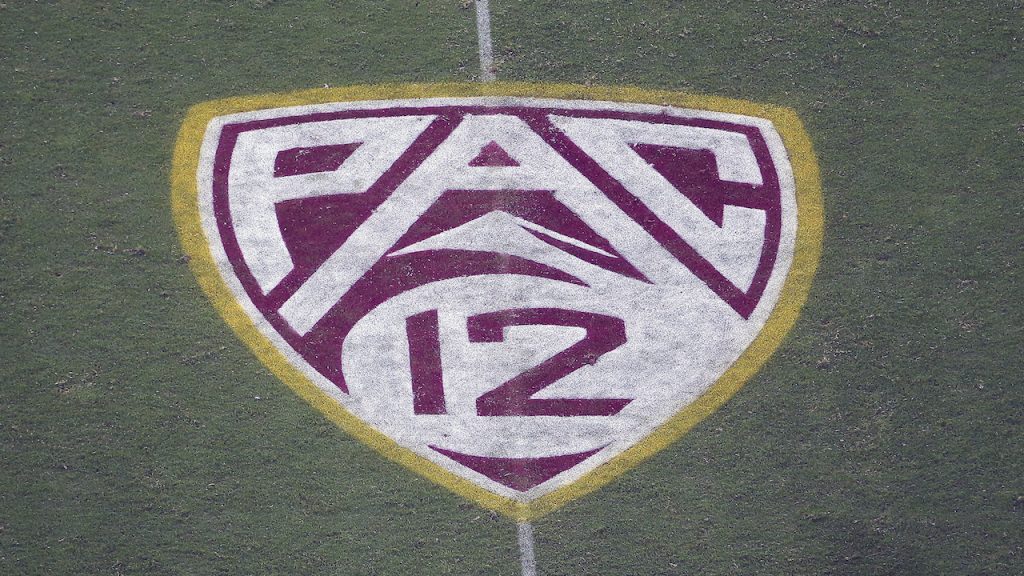The Pac-12 Conference has existed, in some form or another, for 107 years.
After the thunderous news Thursday that USC and UCLA are seeking membership in the Big Ten starting in 2024, the future of the conference is very much in doubt.
What’s next for the shattered Pac-12, which was caught completely off guard by the planned departures of the schools in its largest media market and its most fertile recruiting ground?
Without an anchor in Southern California, the league is a shell of its former self.
Can it exist as a 10-school entity?
Should it expand?
Is a merger possible?
First, let’s be clear: When it comes to conference realignment, nothing is done until it’s done — and sometimes not even then.
USC and UCLA have yet to utter a public peep; nor has the Big Ten.
But if we presume the move becomes official in the next 24 hours, there are a slew of scenarios to consider:
— Will Oregon and Washington attempt to join the Big Ten, as well?
The success of their football teams makes the Ducks and Huskies potential targets.
UW also brings a significant media market and academic bonafides, while Oregon has the Nike affiliation and a national following.
For scheduling purposes, the Big Ten might determine it’s better off with four West Coast schools.
Of course, its media partners would have to agree.
— What happens to Cal and Stanford?
The California Four, which has served as the heart of the Pac-12 for eons, is no more.
The Bears and Cardinal excel at Olympic sports, but neither possesses the football credentials — either the on-field success or the fan affinity that generates TV ratings — to be considered must-haves if the Big Ten intends to take in more schools.
Abandoned by their partner (USC for Stanford) and their sister (UCLA for Cal), the Bay Area schools most likely will remain in the reconfigured Pac-12.
— Could the ‘Four Corners’ schools be next?
Arizona and Arizona State joined the Pac-12 in 1978, while Utah and Colorado came aboard in 2011.
Without the connection to Southern California provided by USC and UCLA, the quartet could look for options together.
The best of those might be the Big 12, to create a league that owns the Central and Mountain Time Zones.
But this development is extremely damaging for all four of those schools given their reliance on Southern California for recruiting and on the L.A. schools as prime sources of TV revenue.
— Are there expansion options available?
Yes, there are several. But none of them are ideal.
The Pac-12 could add the top-tier football teams from the Mountain West, such as San Diego State, Boise State or Fresno State. But those schools bring little in the way of media value.
It could attempt to poach the Big 12 schools such as BYU, TCU or Houston.
But what motivation would those universities have to leave the Big 12, which is suddenly better positioned strategically and competitively than the Pac-12?
The options are few, in part because of the paucity of football schools in major media hubs in the Western third of the country.
— Is an outright merger in the works?
One year ago, the Big 12 was in an equally dire situation, having lost its biggest football brands, Texas and Oklahoma, to the SEC.
It reached out to the Pac-12 and asked about a merger, only to have the offer rebuffed.
At that point, the Big 12 scanned the landscape and decided to expand, adding Cincinnati, Brigham Young, Houston and UCF to create stability for its post-Texas/Oklahoma existence.
Now, the Pac-12 is desperate.
On numerous levels, it makes sense to seek a merger with the Big 12 that would give rise to a conference with 22 teams and span three time zones.
But would anyone pay for it?
The prime driver of conference realignment is the revenue generated by media rights contracts, particularly with Fox and ESPN.
In the Big Ten, they are expected to receive more than $100 million in annual payments from the conference — approximately twice what they might collect by staying in the Pac-12
How much would the TV networks pay for a merged Pac-12 and Big 12?
Certainly not as much as they are paying the Big Ten or SEC — not even close to that amount.
But at this point, expectations must be ramped down.
It’s about survival.
Time to call ESPN and beg for a lifeboat.
Related posts:
 Wilner Hotline – Thanksgiving Day Pac-12 Doings
Wilner Hotline – Thanksgiving Day Pac-12 Doings

Oklahoma head coach Lincoln Riley . (AP Photo/Jeffrey McWhorter)
Wilner Hotline – Lincoln Riley To USC Sends Shock Waves Through Pac-12
Arizona head coach Adia Barnes (AP Photo/Tony Avelar)
Metcalfe Pac-12 WBB notebook: Stanford sweeps ranked LA schools, Utah splits despite Pili injury, Arizona back in bye position
(AP Photo/Damian Dovarganes, File)
Pac-12 survival: Oregon, Washington to deliver the death blow, leave for the Big Ten; more defections expectedJon Wilner
Jon Wilner has been covering college sports for decades and is an AP top-25 football and basketball voter as well as a Heisman Trophy voter. He was named Beat Writer of the Year in 2013 by the Football Writers Association of America for his coverage of the Pac-12, won first place for feature writing in 2016 in the Associated Press Sports Editors writing contest and is a five-time APSE honoree.
